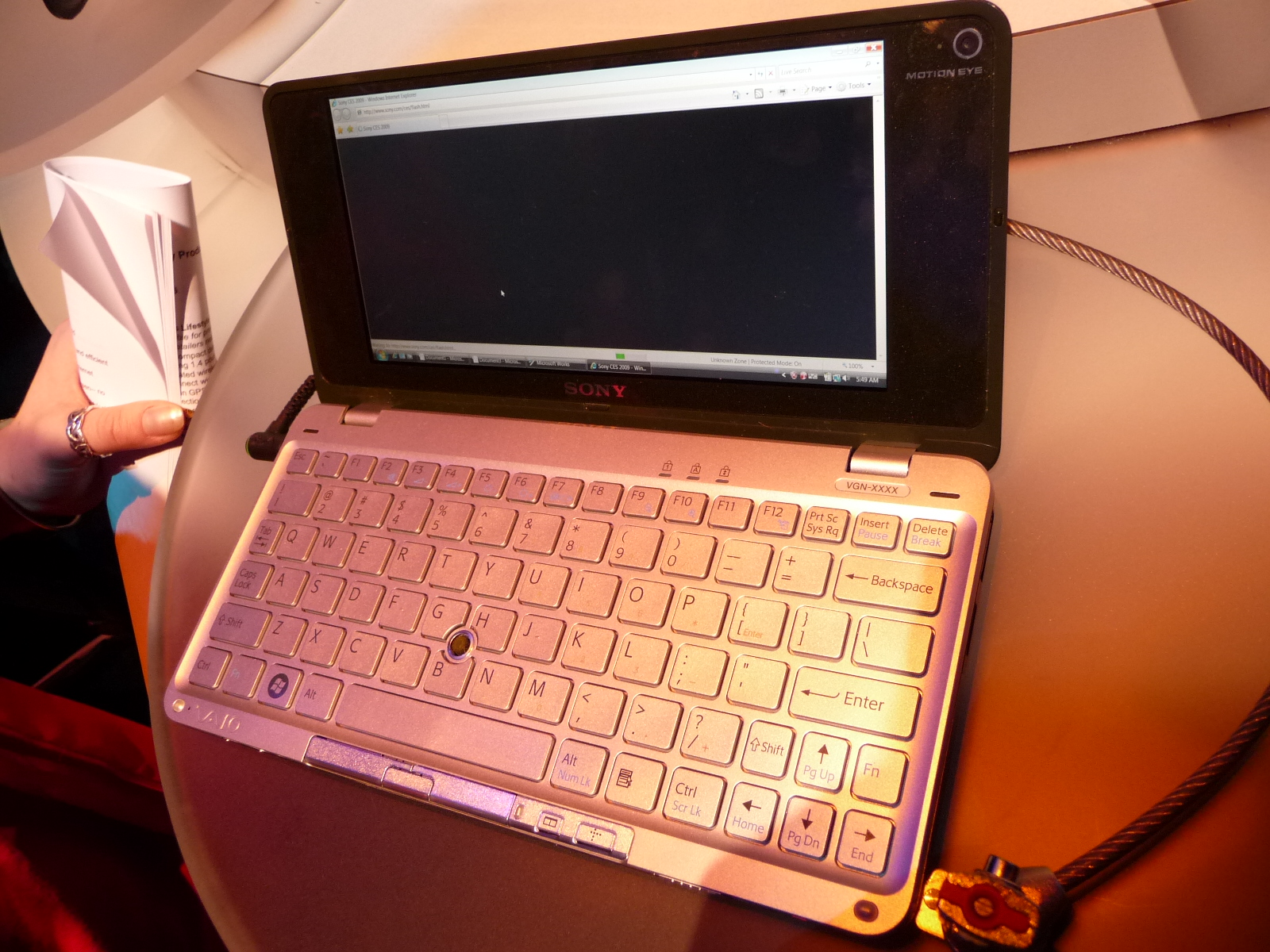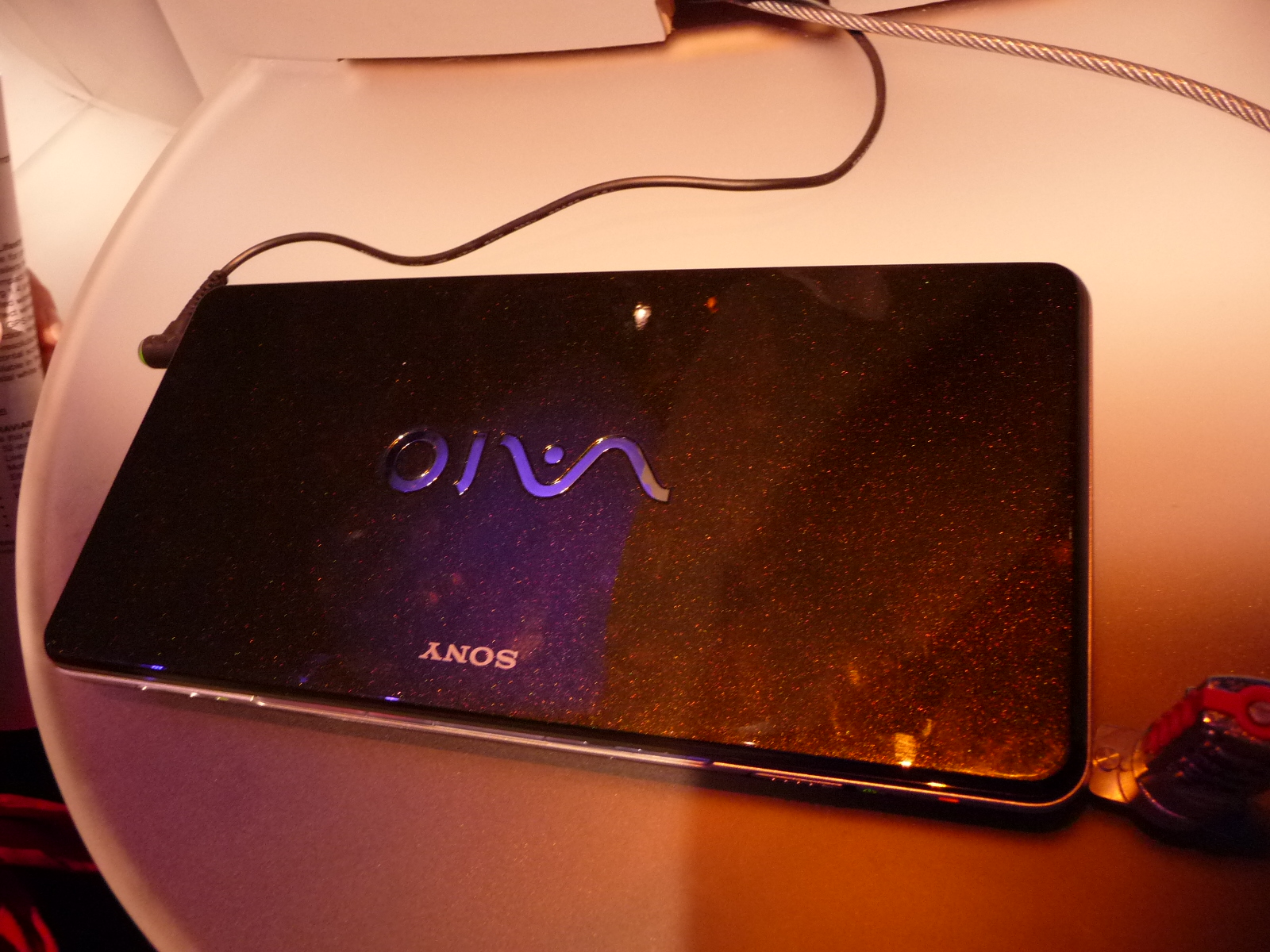Vaio P Designer Inspired by Mini Cooper
Designer of the Vaio P Lifestyle notebook says he was inspired by the Mini Cooper.
Computer notebooks, and PCs in particular, always feel like they’re built by a committee. In contrast, cars often have a lead visionary at the helm to steer the final product into something that’s unique (especially for enthusiast vehicles). Of course, computer typically share many more of the same “platform” parts, such as chipsets and CPUs.
It’s not often, then, to hear the designer of a notebook speak out on his inspirations and thought for a product. Takuma Tomoaki shared his thought processes when designing the Vaio P, which he said shares the same characteristics as the Mini Cooper in that both are small but sophisticated.
In a sea of netbooks that are very similar, thanks to all running the same Intel chipset and Atom processor, Sony’s not-a-netbook Vaio P manages to be a different from the rest.
First of all, the decision to go with a “trackpoint” nub rather than a touchscreen (or touchpad) was to save on power, thickness and costs. That also allowed for the “smallest usable keyboard” possible, which also has a carefully calculated pitch of 16.5mm (pitch is the spacing between the centers of adjacent keys).
The ultra-wide 1600 x 760 resolution was for the purpose of displaying the full detail of 720p HD video. Of course, the one flaw in that is that the Intel Atom at its current speeds is unable to render video at such high-definition resolutions. The display was to be larger too, but had to be reduced to make room for the wireless antennas.
There’s no denying that the Vaio P is a well constructed notebook though. The top side is made of aluminum, the inside plastic, and carbon fiber makes up the base -- all for a mix of strength and lightness.
Get Tom's Hardware's best news and in-depth reviews, straight to your inbox.
From our hands-on the Vaio P at CES, we were impressed by the form and design but it’s certainly not the most usable or value-conscious portable solution.
-
I'd be happy if it could playback 1280x720p HD movies.Reply
The 1,6Ghz was reported to only playback 720x480p,but the 1,3Ghz might have issues with this type of video.
It's a pretty good resolution for a screen,which is the least sony can do when seeing it's exaggerated pricetag for a (cheap) Atom based mininotebook/MID/whatever ultra small internet device this is.
I'm much more for 16/9 though. 1280x720 would probably be enough for most 'toys' like these, and would save on some cost.
Pitty they didn't go for the LED controller; but chose the old 'joystick' type of mouse instead. -
dyingcat A friend got one of these yesterday. Seems to play a 720 video file well enough, but stutters for YouTube's HD videos (cuz' they're flash?)Reply
Texts will require magnifying glasses..
That trackpoint will be much liked by Thinkpad users like myself..Can't believe Lenovo released a netbook, and didnt put trackpointer on it. -
zodiacfml i think it depends on what file format on 720p it will play properly. likely, the mpeg4 format will be difficult for the atom.Reply
-
longgoner "It's not often, then, to hear the designer ... speak out on his inspirations and thought for a product." Take a look at http://www.sony.net/Fun/design/activity/product/index.html. About video playback, some Japanese reviews seem to indicate that it depends on the software you're using.Reply


